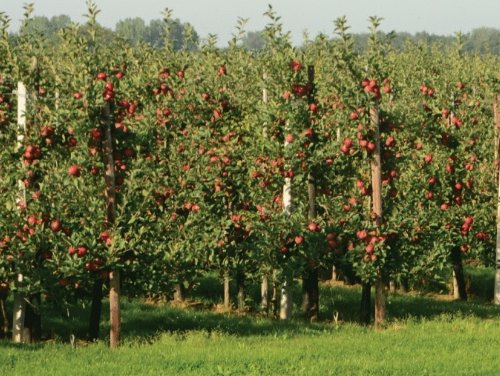Finger limes, scientifically known as Citrus australasica, are endemic to the rainforest regions of South-East Queensland and Northern New South Wales in Australia, Jade King* writes.
Also referred to as "citrus caviar", these small, elongated fruits are gaining popularity in the culinary world for their unique citrus bursting texture and variety of lime flavours.
Initially, finger limes have emerged as a niche industry in Australia and overseas, however in recent years it is attracting attention on a more commercial level both domestically and internationally.

A Red Champagne fingerlime in the orchard.
Production and growers
Recently, Agrifutures Australia released the Australian Native finger Lime RD&E Plan, which estimates just under 100 tonnes of finger limes are produced across approximately 70 growers (Agrifutures Australia, 2023).
Furthermore, at the point of publication it was estimated that there would be an 8% increase in production by 2025, along with more growers entering the industry. The majority of the growers are smaller producers, with less than 1000 trees.

The spectacular Red Champagne fingerlime.
Growing Regions
Similar to the Australian native, macadamia, finger limes whilst originating from the subtropical regions of Australia, have the capability to be grown across Australia.
It is now known that there are growers all across Australia, with the exception of Tasmania and Northern Territory. This demonstrates the versatility and resilience of the finger lime across different climatic zones and soil type, however highest production to date appears to occur in well-drained soil and warm temperatures.
Market Demand
The demand for finger limes has been steadily increasing, driven by their unique texture, taste and appearance. Chefs and food enthusiasts appreciate their bursting pearls of citrus flavour, which add a distinctive touch to various dishes, desserts, and beverages.
More recently, the fruit are becoming more available to consumers through fruit and vegetable markets, as well as online, and are sought after for their high vitamin C content and potential health benefits.

Finger limes are genetically diverse in shape, peel and pearl colour, size and flavour.
All have in common the caviar-like pulp, which makes this fruit unique in the genus citrus.
Varieties
Finger limes are genetically diverse in shape, peel and pearl colour, size and flavour. All have in common the caviar-like pulp, which makes this fruit unique in the genus citrus (Delort et al, 2015).
It is reported that there are over 65 varieties of finger lime have been identified in the wild (Rennie, 2016). The finger lime fruit is cylindrical, with highly variable colouration due to the genetic diversity of this species, ranging from black or brown through to yellow, green or pink (Agrifutures Australia, 2017).
The tree itself can range from a compact bush to a medium sized tree depending on the variety. In a commercial context, varieties that have fruit with hard skins, low seed content and a consistency in skin and pearl colour are highly valued.
Harvesting and Processing
Finger limes are hand-picked when fully ripe, as they do not ripen further once harvested. Harvest tends to extend from January through to June, depending on the variety and climatic conditions. Colder areas tend to have shorter harvesting windows than subtropical regions. Due to the prolific spikes, gloves and full-length clothing are a necessity.
Domestic and International Markets
Finger limes have gained popularity in both domestic and international markets. In Australia, they are used by renowned chefs and restaurants to elevate their dishes and are becoming more accessible to consumers in supermarkets and fruit and vegetable retailers.
Internationally, many finger lime growers are exporting to various countries, including Italy, Singapore and Japan, to name a few. There are significant hurdles for the export of fresh finger lime fruit, however frozen fruit and packaged frozen pearls are able to be exported to a great range of countries.
International production
It may come as a surprise to know, that whilst the Australian native finger lime originates from Australia, it is grown in many countries around the world. More surprisingly, the biggest growers are overseas, with one farm alone in Guatemala having over 20000 trees planted.
In just the last year, it has become known that Australian native finger limes are grown in France, Italy, Spain, Morocco, Croatia, Japan, Guatemala, USA, Africa, Thailand and many more countries.
Challenges and Opportunities
Despite the increasing demand, the finger lime industry in Australia is still relatively small and niche. Challenges include limited awareness among consumers, high production costs, and the need for specialised knowledge in cultivation and handling.
These challenges are being addressed with the development of a designated industry body and directed research to ensure Australia has the opportunity to lead the way into the future for Australian native finger lime production.
*Jade King of Green Valley Fingerlimes, Peachester in the Sunshine Coast region of Queensland is an Australian fingerlime producer, senior agronomist, head of agriculture and senior teacher. Contact: gvagriculture@gmail.com




